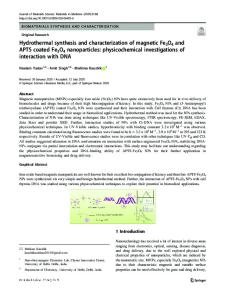Reductive Hydrothermal Synthesis of LaPO 4 :Ce 3+ , Tb 3+ Nanophosphors Yields Stronger Photoluminescence Compared with
- PDF / 77,608 Bytes
- 2 Pages / 576 x 783 pts Page_size
- 63 Downloads / 391 Views
stable structure is nonmagnetic, has a volume per atom 5.2% larger than in diamond (in good agreement with experiment), and shows a slight elongation of the cubic cell along the (111) axis. The researchers found this configuration to be the most stable after considering all possible positions for two B atoms in a 12-atom supercell. The density of states at the Fermi level for BC5 was found to be two times larger than for B-doped diamond with δ = 0.028, showing that the number of carriers does not saturate even at δ = 0.167. The average electron–phonon coupling for BC 5 is approximately 0.89, which is comparable to the coupling for MgB2. The researchers’ analysis showed that the dominant contribution to the electron–phonon coupling comes from the vibrations of the B–C bonds. The researchers said that the large elastic constants in superhard materials require short, strong chemical bonds (typical of materials composed of light elements) that result in energetic phonons. Doping sufficient to sustain moderate electron–phonon coupling results in highTc superconductivity. Noting that the grain size of the BC5 aggregates is only 10–15 nm and that bulk superconductivity is possible only if the coherence length is at least comparable to the size of the grains, Calandra and Mauri said that “it is necessary to grow larger samples, possibly by longer synthesis or by the use of catalysts to speed up the reaction.” STEVEN TROHALAKI
Spin-Polarized Excitonic Photoluminescence Observed in Mn 2+-Doped Colloidal CdSe Quantum Dots Colloidal transition-metal-doped semiconductor nanocrystals have been attracting interest in spintronics, bioimaging, and other fields. However, an undesirable side effect of metal-ion doping is that it often leads to quenching of excitons by energy transfer to the dopants followed by nonradiative recombination. R. Beaulac of the University of Washington, X. Liu of the University of Notre Dame, S. Lee of Korea University, and their co-workers have now reported that the excitonic emission of Mn2+-doped CdSe nanocrystals can be retained and co-exists with strong dopant-exciton magnetic exchange coupling by using quantum confinement to tune the CdSe excitonic levels to below all dopant excited states. As reported in the March 2008 issue of Nano Letters (DOI: 10.1021/nl080195p; p. 1197), the researchers prepared a series of colloidal Mn2+-doped CdSe nanocrystals with diameters in the range of 2 nm < δ < 5 nm by using a soft chemistry synthesis 726
approach and measured their absorption and luminescence spectra. It was found that there are two luminescence peaks for small nanoparticles. The higher-energy peak coincides with the first exciton of the CdSe nanocrystals, whereas the lowerenergy luminescence peak is attributed to the 6A1 ← 4T1 ligand-field transition of Mn2+ that is sensitized by CdSe quantum dot (QD) excitation. In contrast, the luminescence spectrum of the larger nanoparticles shows only one major peak, which corresponds to the excitonic emission of CdSe nanocrystals. The photoluminescence results
Data Loading...











